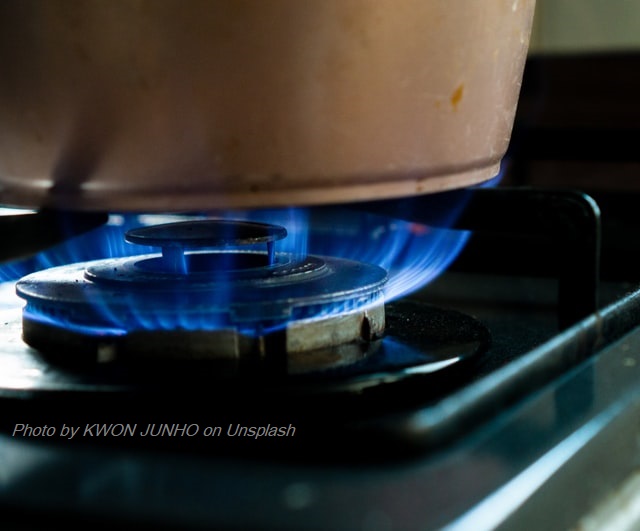A new study from Stanford has found that gas stoves that burn methane gas (also called “natural” gas, a fossil fuel) when they cook food, also leak methane when they’re turned off. And while they’re being used to cook or bake, they create high levels of nitrogen oxides inside the home.
The researchers measured methane and nitrogen oxide (NO, NO2, NOx) emissions from cooktops, ovens and broilers from various kinds of homes in California. They measured while the stove was off, and while it was being used.
What they found was startling: all but 4 stoves leaked more than 10 mg of methane per hour while they were turned off, with an average of 58mg/hour of methane. This means the stoves leaked continuously while they were off. And the stoves leaked a lot of unburned methane while they were turned on and supposedly burning the gas.
When one burner was turned on, the stoves made about 260 mg/hour of methane, showing that even though the burner was burning methane, a fair amount of it was going into the air unburned. During the preheat part of using an oven, the ovens made about 115 mg of methane during the 15 minutes of preheating, or about 660 mg/hour. While the oven was baking, the ovens leaked about 760 mg/hour of methane. Broilers made less, about 110mg/hour of methane.
The researchers estimated that each stove makes about 650 g of methane per year, and if you add up all the gas stoves in the country, the amount of methane leaked is about 28 Gg (a little less than 31,000 tons) of methane per year. Over 20 years, the climate impact of this much methane is about the same as 500,000 cars. Methane is one of the most potent greenhouse gases that there is, and this amount of leakage is very damaging to our climate and our health.
In addition, the researchers measured NOx while the stove burner was on. The amount of NOx was directly proportional to whether the burner was set at low, medium, or high, and was highest during the preheat and broiler settings on a gas oven. Because NOx concentrations vary so much depending on the kitchen size and shape, fans, other ventilation, windows, and much more, they only measured actual NOx release from the stove and not the concentration in the room.
A small kitchen with no exhaust fan and no open windows, would reach quite high levels. Many apartments and some houses only have fans that shoot air back into the room, and don’t exhaust to the outside. A large kitchen with a strong exhaust fan to the outside, with a window open or cracked, would not have nearly as high a level.
Nitrogen oxides are respiratory irritants and are linked to lung and heart problems in adults, and damaged lungs, asthma, and asthma attacks in children. They are very dangerous to our health.
This study shows that gas stoves pose a very real hazard to our health while they are being used (NOx and methane release), and that they also are a significant factor in causing climate change. It’s why we say: #HealthyAirIsHealthCare
What You Can Do:
1. If you have a gas stove, be sure to use an exhaust fan while it is on, or open several windows if you don’t have an exhaust fan.
2. If you are able, replace your gas stove with an electric stove. Induction stoves are more efficient than standard electric stoves. If you live in an apartment and if the wiring in your apartment can handle an appliance that uses a lot of electricity, you could get a single electric burner to help reduce the amount of time you need to use the gas stove.
3. Advocate with your apartment owner and elected leaders to get gas stoves replaced with electric stoves.
Read the scientific study here.
Read a news article about the study here.
01/31/2022





